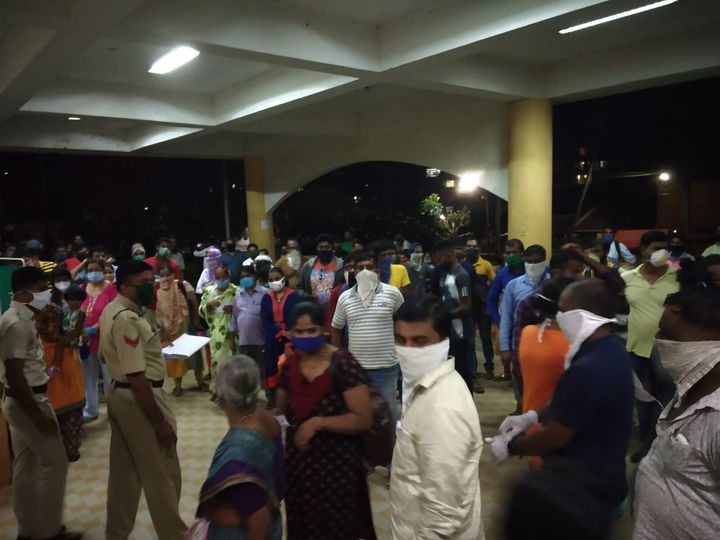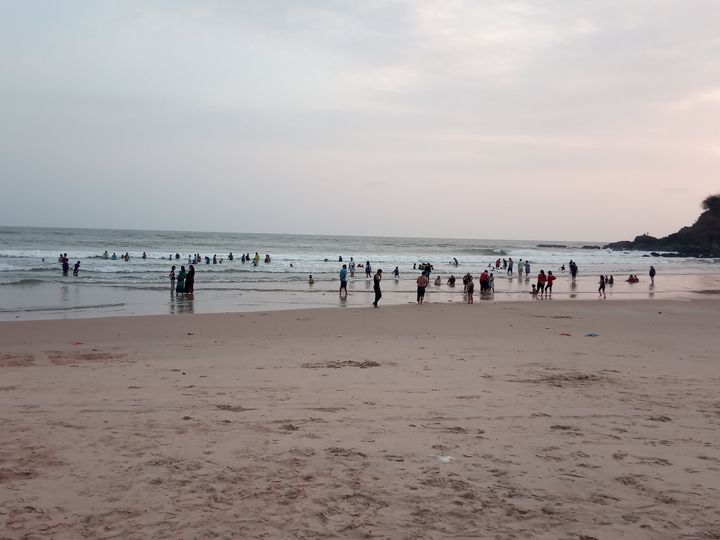
Two weeks ago, actor Pooja Bedi stirred up a controversy when she tweeted about the lack of hygiene at a Goa quarantine centre she had to stay in while waiting for her Covid-19 test results. Bedi and her fiancé had driven down from Mumbai, a coronavirus hotspot, to Goa, which was a green zone with zero Covid-19 cases until recently.
While some Goans had problems with the tone of her tweet, the bigger issue was local resentment over second home owners fleeing hotspots in other parts of the country to reach their holiday homes in the ‘safe’ coastal state.
The number of reported cases in Goa has risen to 70 (29 active cases) in May as flights, trains and private vehicles bring in hundreds of people every day, many of them not necessarily people returning to their homes. This has put a strain on the state’s public health infrastructure, and critics and residents allege that the government is worsening the situation by relaxing control measures.
Private cars coming in from Maharashtra and Delhi via the border have peaked from 28 May, after the Goa government changed its policy of giving out travel passes to enter the state, and began permitting spot self declarations at the border (and self-generating e passes), said Health Minister Vishwajit Rane. Key state ministers admit they are in the dark about why this decision was taken.
“I don’t know why the pass system was suspended. It needs to be back. I understand we need to open the economy, but the health system has to be able to cope. We cannot keep increasing the number of machines to test,″ Goa health minister Vishwajit Rane told HuffPost India. “Only 200-300 people should be permitted by road, and the collector’s office should know where they are staying in the state. Goa is a safe zone, so there is a rush to enter. A lot of people with second homes in Goa are coming in from hotspot areas,” rued Rane.
On Thursday alone, around 571 people entered the state through a single North Goa check post bordering Maharashtra, health secretary Nila Mohanan told media. The numbers were on the same lines on Friday, she added.

As per the current operating procedure that mandates testing on arrival, they were taken to a North Goa hospital for swab collection, but as queues stretched for hours, arguments broke out between the travellers and staff and the police had to be called in to manage the crowd.
Mohanan said the administration was scaling up manpower to meet the increase in demand for test numbers at entry points. However, there is growing pressure from politicians—both from the opposition and within the government—to put a cap on the number of people who can enter Goa.
‘Quarantine tourism’
While the Goa government imposed a stringent lockdown before the rest of the country, its implementation left much to be desired. Many shops ran out of essential supplies and people who stepped out to buy basic necessities had to face police brutality. HuffPost India had reported earlier that migrant workers in the state held on for as long as possible, but many became desperate to leave after two months of no employment. After initial delays and chaos, with some attempting to walk home, the administration has since sent back 87,009 migrants on 43 trains to North Indian and Eastern states.
The government allowed shops and offices to open on April 19, after cases dropped to zero, much ahead of other states in the country. But citizens are now worried because the Goa government has been easing control measures and changing operating procedures at the already porous borders, which allows even people with no pressing need to enter the state to do so.
“We have followed a stringent lockdown for two months, lost money and taken a huge hit to our businesses, all so we could be safe and in the green zone. Now all that is being jeopardised because the government is simply careless about who it permits entry,” accused Rohan Khaunte, independent MLA from Porvorim and a former state minister. “While a lockdown is in place, the government is encouraging quarantine tourism. Who wouldn’t want to escape red zones if they could?” he asked.
Over the past few weeks, residents of the state have noticed an uptick in private vehicles with Delhi, Maharashtra, Haryana and Karnataka number plates, parked outside apartment blocks that are predominantly owned by non-residents.
Goa has a significant number of gated complexes, luxury villas and apartment blocks that operate as second homes or holiday homes for people from outside the state. They are usually locked unless their owners visit or rent out the place.
Officials say 9,402 people have entered the state since the lockdown began on 22 March, but Khaunte says that other details about them are hard to come by. This number includes seafarers, stranded residents returning home, industrial workers from other states—as well as tourists and visitors escaping from red zones.
“The priority should be that Goan students and residents stranded elsewhere be granted entry permits. But we’ve been seeing a VIP culture which allows anybody who wants to escape to their second homes and holiday homes, and who has clout with the government, being allowed to come,” Khaunte told HuffPost India. Officials however said that most of those who are coming in, had either family, relatives, a residence, house or some address in the state.
Rise in infections
Like in other states, the resumption of train and flight services has led to a spike in the number of infections in Goa. In the first five days since May 12, when trains started bringing in passengers from Mumbai and Delhi, Covid-19 positive cases went from zero to 35, setting off anger and despair in the state.
The graph has only gone up since then. On 23 May, eleven passengers from Mumbai, who arrived on the Delhi Rajdhani Express, tested positive for Covid-19, again triggering criticism that the government is being too lax in granting permits.
Chief Minister Pramod Sawant’s earlier explanation that entry permits were only granted to those who produced local addresses cut no ice with residents, given the number of holiday homes in the state. In mid-May, after receiving flak over reports that honeymooning couples were boarding the Mumbai-Goa train, Sawant sternly warned tourists against travelling to the state. Just a week earlier, the government had been hoping that interstate travel would revive tourism.
The flips-flops and contrary signals from the administration are worrying residents. Underlying this, are the apparent differences between Chief Minister Pramod Sawant and Health Minister Vishwajit Rane. While the latter wants a cap on numbers entering the state, the chief minister said there was no need to ban anyone, since there was 100% testing at entry points.
“What is happening in Goa is what always happens. Law-abiding citizens follow a lockdown to the tee but they end up paying the price, while others with no such compunctions fritter away the good that a lockdown enabled,” said landscape botanist Miguel Braganca.

Goa continues to put itself in the green zone with 29 active cases, arguing that all the cases are “imported”, and there is no community transmission yet. But there is worry that the imported cases could trigger community transmission before long and that Goa is squandering its advantage in tackling the spread by opening its borders to non-residents. Digamber Kamat, opposition leader and former chief minister, has also called for stopping the trend of people travelling to Goa just because it’s a safe zone.
Goa currently has a daily testing capacity of 1,700. The current operating procedure is that entrants take a test on arrival by paying Rs 2,000, or produce a Covid negative certificate, not older than 48 hours, from an ICMR-approved lab.
Passengers on flights and trains are tested on arrival, though some have been escaping testing at railway stations by jumping off before stops, according to reports. Earlier, travellers had to wait a day at government facilities until their test results came back negative. As the number of entrants rose, creating a logistical challenge for the administration, people are now permitted to proceed to their place of stay, and expected to self isolate till their test results are communicated by SMS.
When flights resumed from May 25, the government for a short while dropped the requirement for mandatory testing, giving entrants the option for a 14-day home quarantine instead. However, it soon backtracked after an uproar on social media, and from opposition and media.